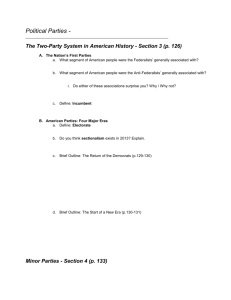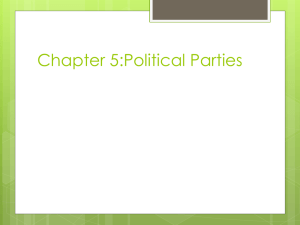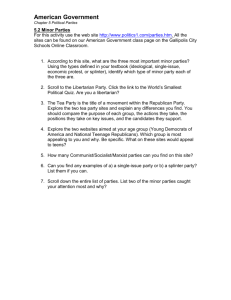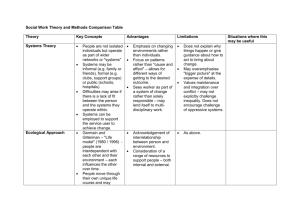Chapter 5 - FireNotes.com
advertisement
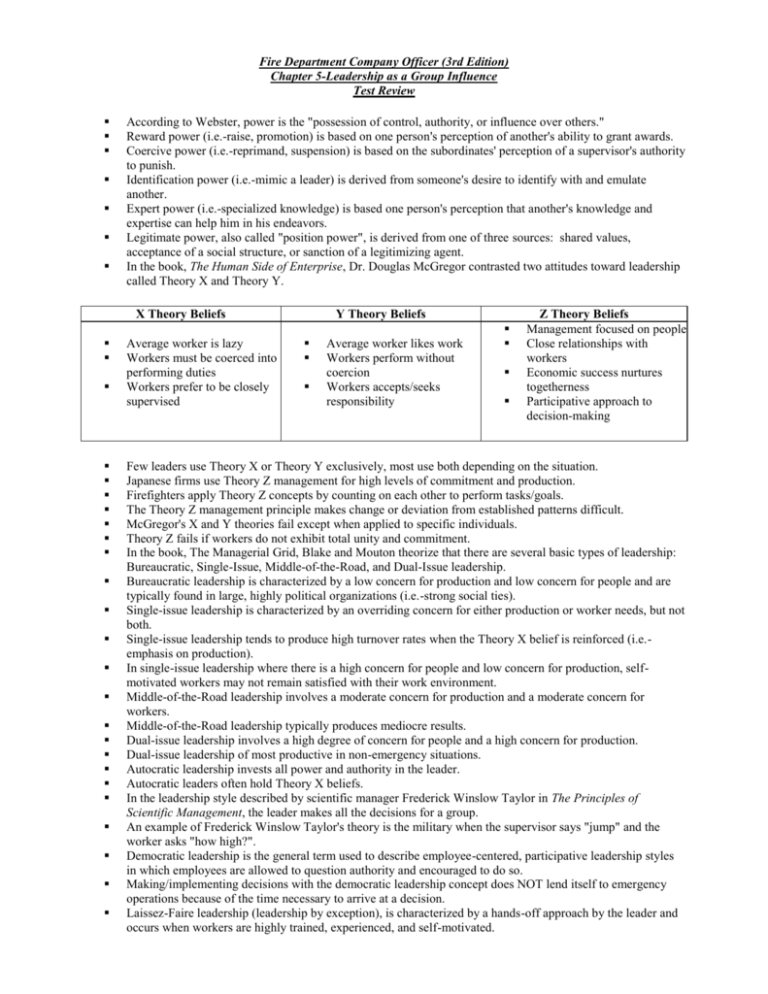
Fire Department Company Officer (3rd Edition) Chapter 5-Leadership as a Group Influence Test Review According to Webster, power is the "possession of control, authority, or influence over others." Reward power (i.e.-raise, promotion) is based on one person's perception of another's ability to grant awards. Coercive power (i.e.-reprimand, suspension) is based on the subordinates' perception of a supervisor's authority to punish. Identification power (i.e.-mimic a leader) is derived from someone's desire to identify with and emulate another. Expert power (i.e.-specialized knowledge) is based one person's perception that another's knowledge and expertise can help him in his endeavors. Legitimate power, also called "position power", is derived from one of three sources: shared values, acceptance of a social structure, or sanction of a legitimizing agent. In the book, The Human Side of Enterprise, Dr. Douglas McGregor contrasted two attitudes toward leadership called Theory X and Theory Y. X Theory Beliefs Average worker is lazy Workers must be coerced into performing duties Workers prefer to be closely supervised Y Theory Beliefs Average worker likes work Workers perform without coercion Workers accepts/seeks responsibility Z Theory Beliefs Management focused on people Close relationships with workers Economic success nurtures togetherness Participative approach to decision-making Few leaders use Theory X or Theory Y exclusively, most use both depending on the situation. Japanese firms use Theory Z management for high levels of commitment and production. Firefighters apply Theory Z concepts by counting on each other to perform tasks/goals. The Theory Z management principle makes change or deviation from established patterns difficult. McGregor's X and Y theories fail except when applied to specific individuals. Theory Z fails if workers do not exhibit total unity and commitment. In the book, The Managerial Grid, Blake and Mouton theorize that there are several basic types of leadership: Bureaucratic, Single-Issue, Middle-of-the-Road, and Dual-Issue leadership. Bureaucratic leadership is characterized by a low concern for production and low concern for people and are typically found in large, highly political organizations (i.e.-strong social ties). Single-issue leadership is characterized by an overriding concern for either production or worker needs, but not both. Single-issue leadership tends to produce high turnover rates when the Theory X belief is reinforced (i.e.emphasis on production). In single-issue leadership where there is a high concern for people and low concern for production, selfmotivated workers may not remain satisfied with their work environment. Middle-of-the-Road leadership involves a moderate concern for production and a moderate concern for workers. Middle-of-the-Road leadership typically produces mediocre results. Dual-issue leadership involves a high degree of concern for people and a high concern for production. Dual-issue leadership of most productive in non-emergency situations. Autocratic leadership invests all power and authority in the leader. Autocratic leaders often hold Theory X beliefs. In the leadership style described by scientific manager Frederick Winslow Taylor in The Principles of Scientific Management, the leader makes all the decisions for a group. An example of Frederick Winslow Taylor's theory is the military when the supervisor says "jump" and the worker asks "how high?". Democratic leadership is the general term used to describe employee-centered, participative leadership styles in which employees are allowed to question authority and encouraged to do so. Making/implementing decisions with the democratic leadership concept does NOT lend itself to emergency operations because of the time necessary to arrive at a decision. Laissez-Faire leadership (leadership by exception), is characterized by a hands-off approach by the leader and occurs when workers are highly trained, experienced, and self-motivated. Effective leaders make others feel strong, build trust, structure cooperative relationships, resolve conflicts, and stimulate/promote goal-oriented behavior. Effective company officers empower subordinates be thoughtfully evaluating performance and readiness for increased responsibility. Leaders build trust by consistently demonstrating their personal/professional integrity. Integrity can be defined as "obedience to the unenforceable." Cooperation to attain goals must not lead to excessive competition. Conflict abatement should focus on the issue or behavior, not on personalities. Achiever Ambitious Materialistic Competetive Involver Equality Hamrony Skeptical Clare Graves' Classifications (Values of) Choice-Seeker Loyalist Kinsperson Individualistic Order History Knowledgeable Duty Tradition Respect Cooperation Survival Loner Survival of the fittest Individual strength Men tend to devise and attempt to hold a rigid schedule of activities, while women tend to be more flexible when scheduling activities.
